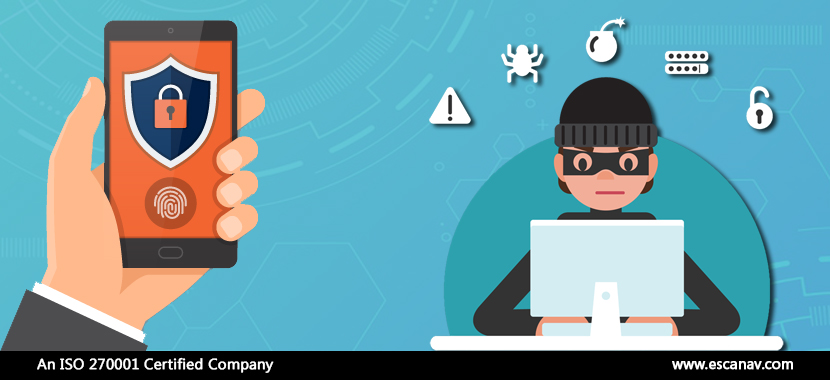Imagine this, you have a recently launched phone whose specifications are better than most of the other smartphones in the market. However, you notice that suddenly its browser’s performance has gone sluggish. Not just that, the battery drains off really quickly even after you have charged it to its full capacity, not so long ago.
In such a scenario, it doesn’t take a genius to deduct that your smartphone is infected with malware. So what do you do next? Here’s what our security experts suggest:
Update the smartphone’s software –
Software updates released by the phone’s manufacturers usually contain security add-ons that buffer the phone’s security. Hence, it is advised to install updates as soon as the manufacturers release them. Failing to update the phones can make the phone vulnerable and susceptible to attacks when a user is least expecting it.
Proactive Measures –
One should always implement safeguards in conjunction with common security updates. They sure avoid clicking on links from unverified sourced across various platforms. Regardless of the platform, the link could contain harmful malware or other bugs that can infect a phone. Additionally, it is advised to use different login passwords for different accounts, like social media, banking, or emails.
Yet, if additional security is the need of the hour then the use of Two Factor Authentication is advised, which will ensure only the right person has access to a certain smartphone.
Always lock the phone, with a passcode, a pattern of a fingerprint if the smartphone allows the feature. It provides basic security towards dealing with unauthorized entry.
Avoid sharing the phone number –
In this digital age, a phone number is like a particular person’s digital identification code, just like a government-issued identification number. Hence, one should only give their number to trusted sources while sharing information. Hackers and threat actors can use the user’s phone number and compromise their smartphone through SMS malware, mobile scams and even on the installed 2FA account.
Install a potent Antivirus –
With the development of mobile technology, a mobile phone can do almost everything that a computer is capable of and allows the user more mobility. Yet, people chose to only install Antivirus software on the computer and not on a mobile phone. Smartphones are at a higher risk now than ever and they demand to be protected with an antivirus that is also compatible with the one installed on a user’s computer.
Hence, our security experts suggest on using eScan Antivirus for Android and for iOS, which stands out with the following features
- Blocks Unwanted calls
- Offers backup of all contacts
- Anti-theft
- Safe browsing
- Privacy Advisor
Steps to follow in case of a breach –
The easiest way to eradicate a breach is by resetting the phone to its factory setting and then install the latest operating system on the phone. Another way is to head to the security setting and access the administration menu to check the list of installed apps. If an app is discovered, that the user is not familiar with or doesn’t remember installing, then the user should check for reviews and see if it’s been identified as harmful before uninstalling it.
A few signs of the phone being hacked are –
- A spike in data consumption
- Sudden battery drains
- Sluggish performance
A regular security check of the phone can also be conducted with eScan’s Mobile Security Antivirus.
Protecting the phone from the hackers in a smart way is necessary for today’s era and preventing a breach is the key to securing data. The use of simple measures like installing an antivirus and enhancing security protocols can work wonders.
Importantly, the clicking of unknown links should be avoided and unknown downloads should not be authorized.
To read more, please check eScan Blog







